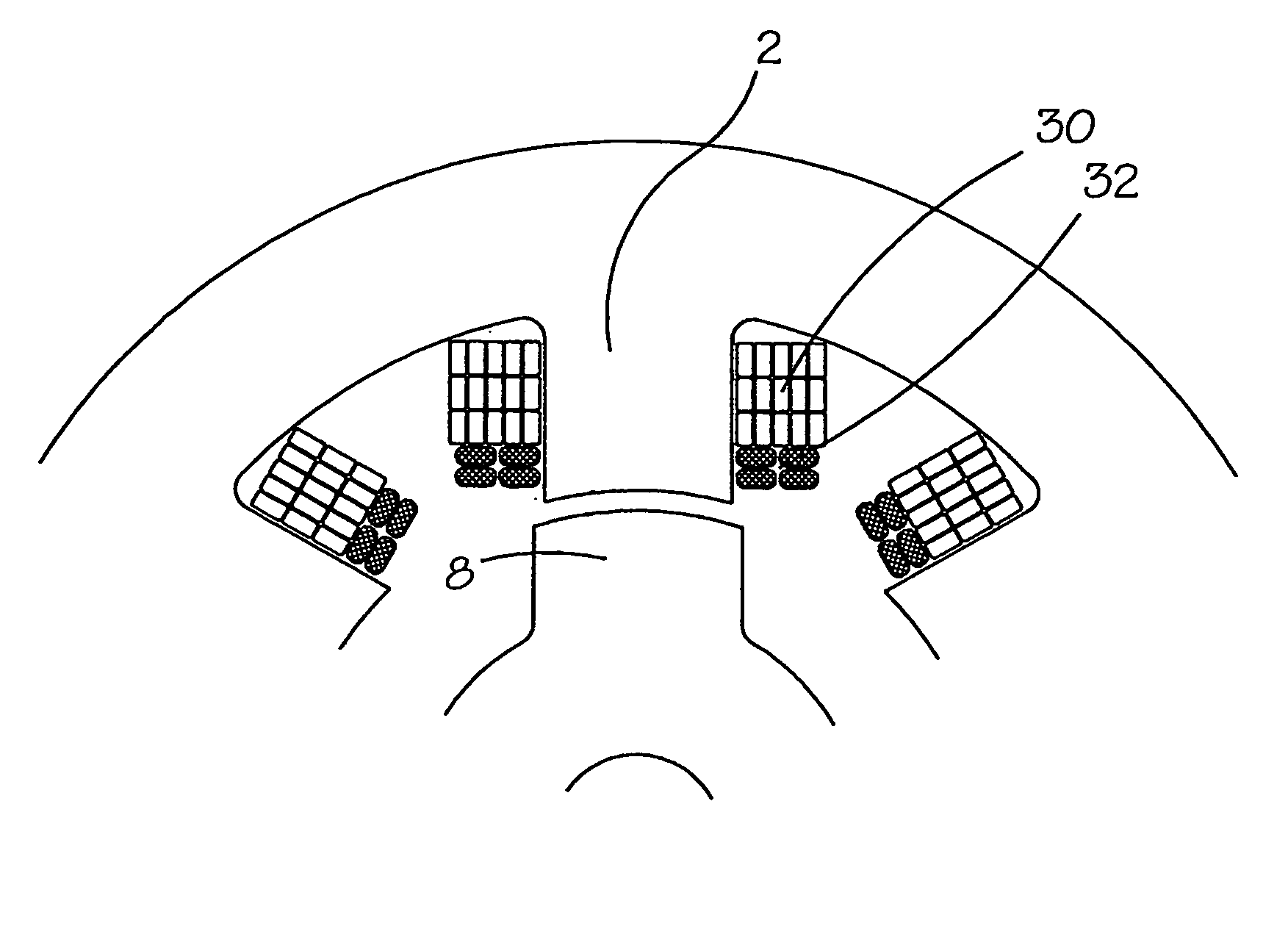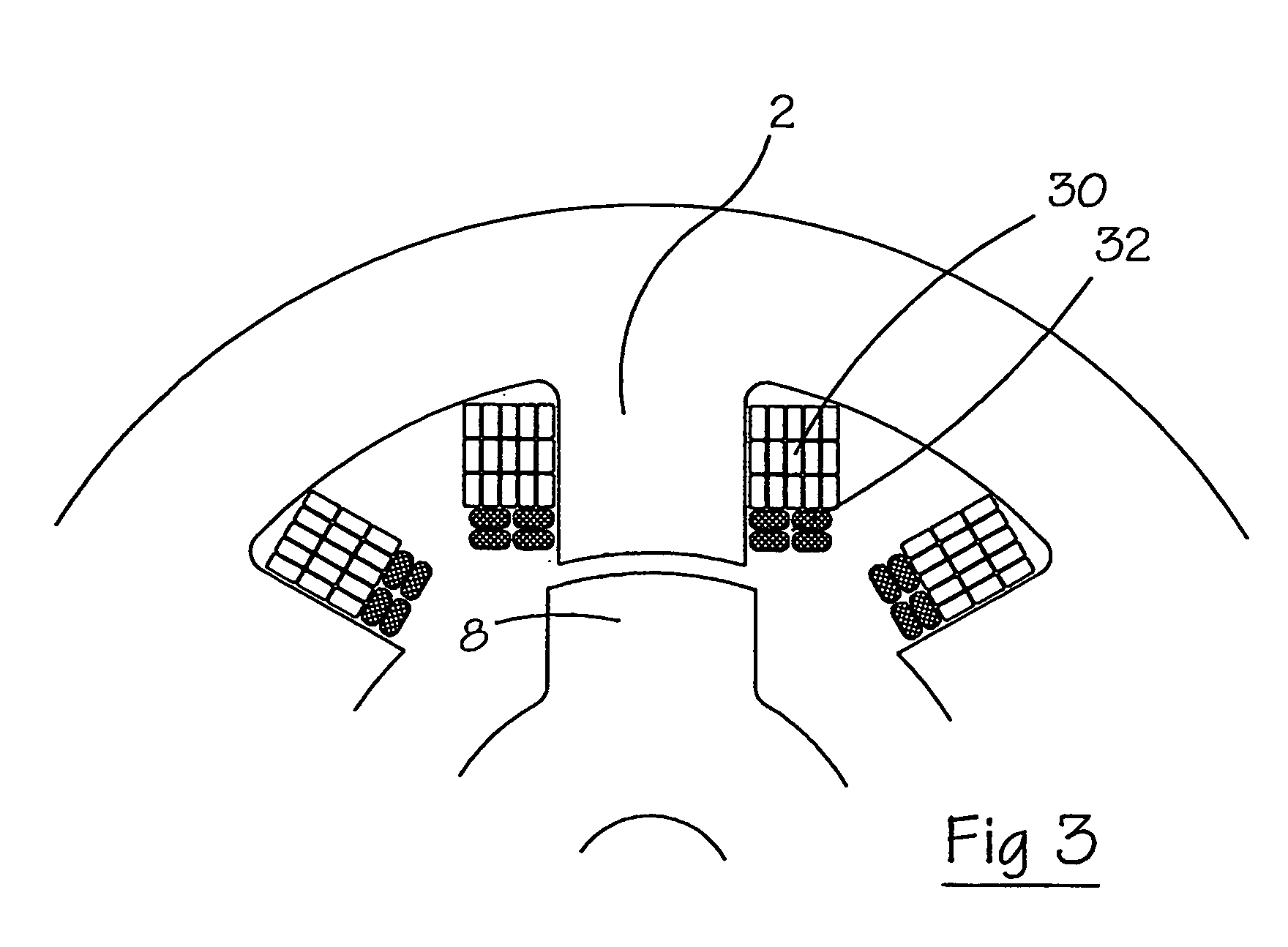Windings for electrical machines
a technology of windings and electrical machines, applied in the direction of dynamo-electric machines, electrical apparatus, variable inductance/transformers, etc., can solve the problems of increasing the resistance of the conductor, increasing the cost of the winding, so as to avoid an unnecessary increase in the dc loss and minimize the ac loss
- Summary
- Abstract
- Description
- Claims
- Application Information
AI Technical Summary
Benefits of technology
Problems solved by technology
Method used
Image
Examples
Embodiment Construction
[0025]FIG. 3 shows a cross section of a coil in accordance with one embodiment of the invention. The coil, mounted on a stator pole 2, is made up from a stack of two sub-coils 30, 32. In this exemplary embodiment, the first sub-coil 30 comprises 15 turns, arranged in five layers of three turns per layer of solid rectangular strip insulated copper conductor. The second sub-coil 32 comprises four turns arranged in two layers of two turns / layer. The second sub-coil 32 is made from litz wire, for example each turn is made up of 76 strands of 0.8 mm insulated wire woven from four sub-conductors of 19 strands each, as available from wire suppliers such as Von Roll Isola of Zurich, Switzerland. As an alternative, the turns of the first sub-coil 30 can also be made up of strands. The insulation for the strands of litz wire can be a coating of, for example, magnet wire enamel. The litz wire can also be overtaped with, for example, a polyester tape or a yarn, such as nylon, silk or glass.
[00...
PUM
| Property | Measurement | Unit |
|---|---|---|
| area | aaaaa | aaaaa |
| volume | aaaaa | aaaaa |
| depth | aaaaa | aaaaa |
Abstract
Description
Claims
Application Information
 Login to View More
Login to View More - R&D
- Intellectual Property
- Life Sciences
- Materials
- Tech Scout
- Unparalleled Data Quality
- Higher Quality Content
- 60% Fewer Hallucinations
Browse by: Latest US Patents, China's latest patents, Technical Efficacy Thesaurus, Application Domain, Technology Topic, Popular Technical Reports.
© 2025 PatSnap. All rights reserved.Legal|Privacy policy|Modern Slavery Act Transparency Statement|Sitemap|About US| Contact US: help@patsnap.com



